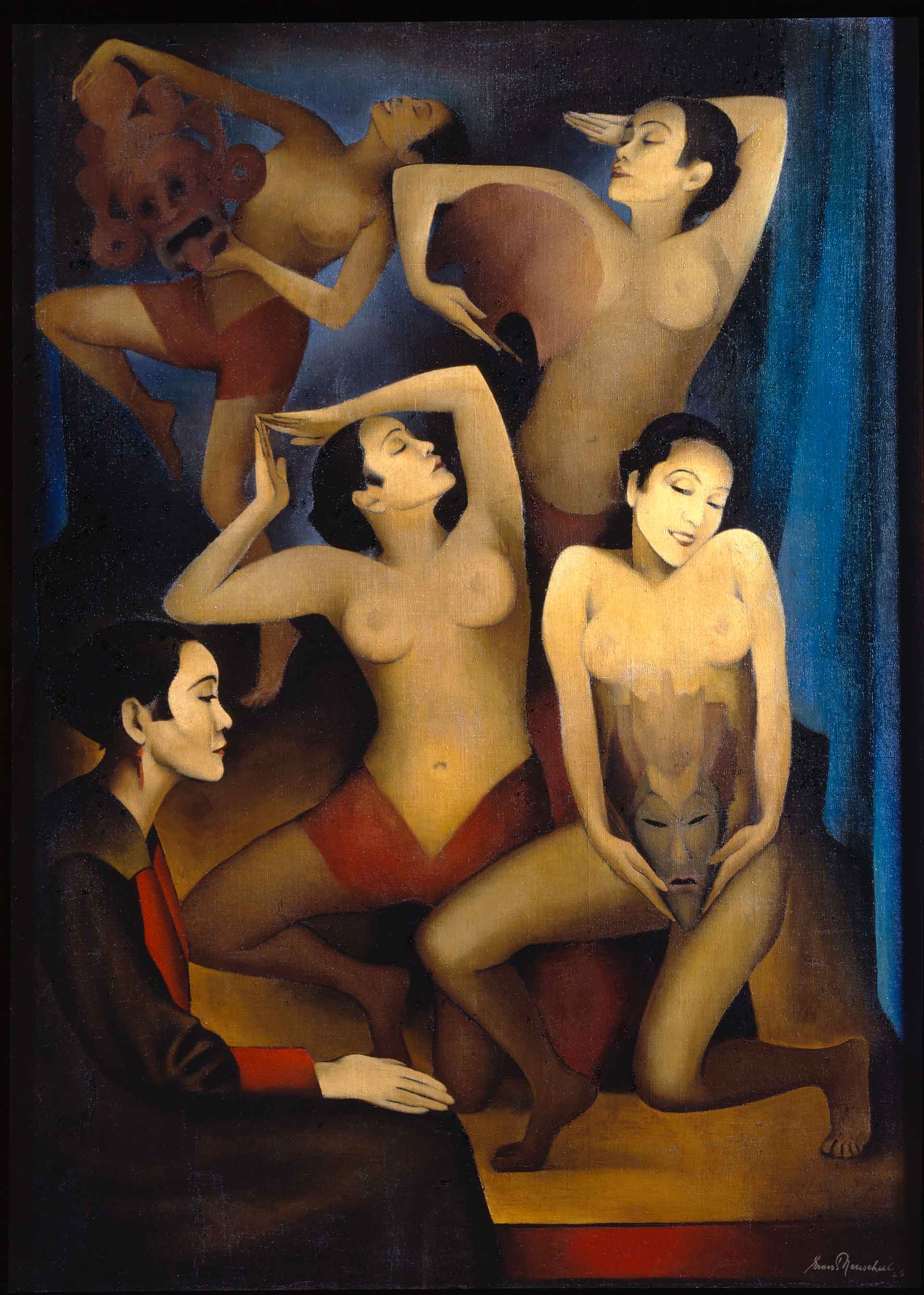Lust
Gallery 209

The quintessence of the “roaring twenties” is found in nocturnal, ecstatic dances oozing with sensuality in Paris’s Montmartre and Montparnasse and in Berlin’s Moka Efti. The exhibition continues with this explosive expression of an emancipated, sensual lifestyle whose most celebrated figure is dancer Josephine Baker. She was the first person of color to become an entertainment star, achieving success in Europe instead of in her native USA due to the segregation and Prohibition in her country.
Josephine Baker is attributed with the introduction and success of the Charleston in Europe. She was so influential that pale-skinned Parisian women applied nut creams to darken their skin to more closely resemble the impressive dancer, known as the “ebony goddess.” Thanks to her charismatic personality, talent, and utter freedom of body and spiritual expression onstage, Josephine Baker son disarmed her detractors and reaped incredible success. In this gallery, viewers can enjoy a range of experiences that complement the exhibition through an intelectual staging, with literary cabarets, as well as an emotional one, via the colors, perfumes, films, and music of the era. Thus, visitors can dance to the rhythm of jazz, Charleston, or the chansons of the period, or listen to the classical composers of twelve tone music.
The term eroticism, which originally referred to sensual or passionate love embodied by the ancient Greek god Eros, relates to desire, sensuality, sexuality, and attraction between human beings. However, erotic love is not the total opposite of romantic love, as the kind of love that sublimates sensuality is often associated with Romanticism.
Visitors will find within this gallery a small cabinet with an intimate atmosphere that gives them the opportunity to discover, through fragments from various films, the rich erotic milieu of the 1920s.
Schall und Rauch (“Smoke and mirrors”) was the name of a magazine published in German, and also that of a literary cabaret in Berlin, which Max Reinhardt opened in 1901. He chose it for want of a better idea and because he recalled a quotation from Goethe’s Faust where smoke and mirrors are used to mean that which cannot easily be fixed. The editor of the magazine, Hans von Wolzogen, was also director of the cabaret in 1920. The Dada Almanach was founded by Richard Huelsenbeck, who brought the ideas of the Dada movement to Berlin from Zurich, where it was born in 1916. By the time the First International Dada Fair was held in Berlin in 1920 amid much press controversy, Dada was already widely known to the public at large. The German capital was home to the latest trends, and as this issue of Schall und Rauch noted, “one never knows what is happening in Berlin! One must stand firm and be prepared for anything.”
Founded on February 5, 1916 in Zurich by Hugo Ball and Emmy Hennings, the Cabaret Voltaire was politically and artistically oriented, a place for experimenting the new trends. Artists gathered there to read poetry, talk about anything, scream, or dance randomly, generating a complete cacophony. One day, Hugo Ball announced he was going to publish a small journal entitled Dada. Tristan Tzara was so enthused about the term that he started to write senseless poetry: Dadaism had been born. The First International Dada Fair took place in Berlin in 1920 organized by George Grosz, John Heartfield, and Raoul Hausmann and it was to become the most famous of all Berlin Dada’s exploits. It featured almost 200 works by artists including Hans Arp, Max Ernst, Hannah Höch, Francis Picabia, and Rudolf Schlichter, as well as key works by Grosz and Hausmann. In 1921 the Galerie Montaigne in Paris hosted the Dada Salon. Both events were short-lived, as was the Dada movement.
